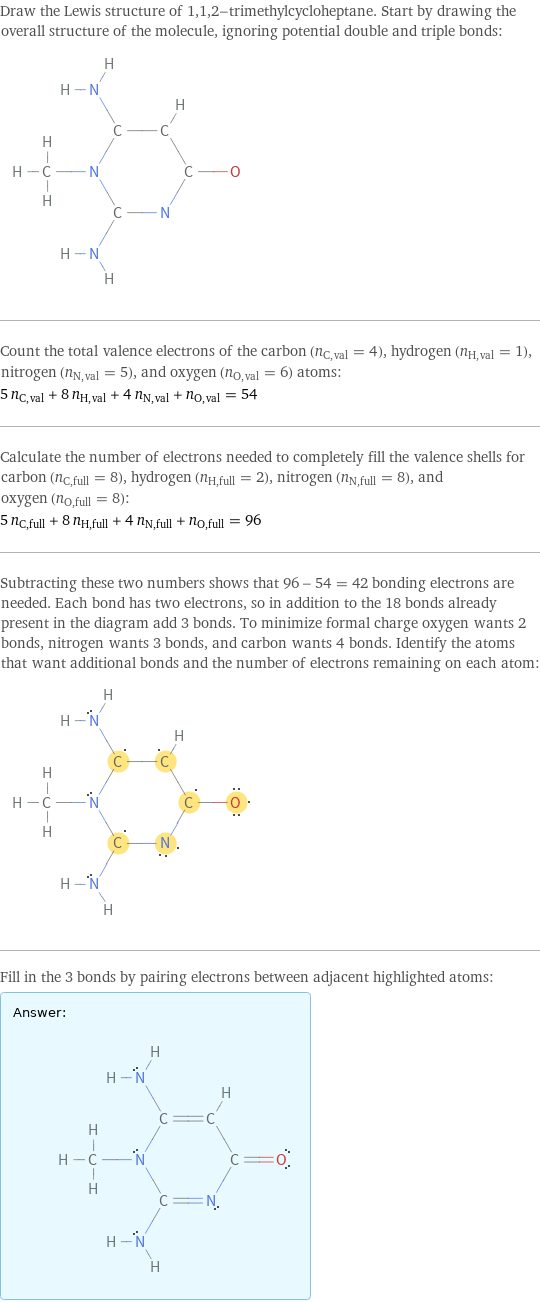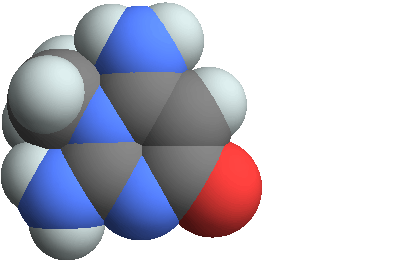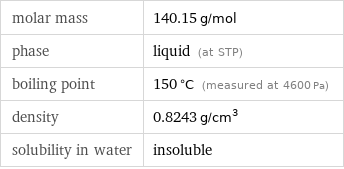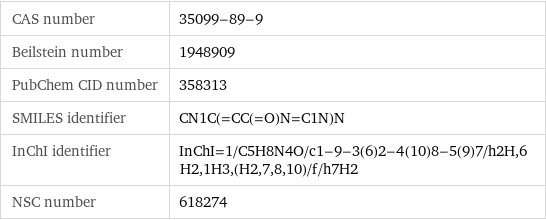Input interpretation

1, 1, 2-trimethylcycloheptane
Chemical names and formulas

formula | C_5H_8N_4O name | 1, 1, 2-trimethylcycloheptane IUPAC name | 2, 6-diamino-1-methyl-pyrimidin-4-one mass fractions | C (carbon) 42.9% | H (hydrogen) 5.75% | N (nitrogen) 40% | O (oxygen) 11.4%
Lewis structure

Draw the Lewis structure of 1, 1, 2-trimethylcycloheptane. Start by drawing the overall structure of the molecule, ignoring potential double and triple bonds: Count the total valence electrons of the carbon (n_C, val = 4), hydrogen (n_H, val = 1), nitrogen (n_N, val = 5), and oxygen (n_O, val = 6) atoms: 5 n_C, val + 8 n_H, val + 4 n_N, val + n_O, val = 54 Calculate the number of electrons needed to completely fill the valence shells for carbon (n_C, full = 8), hydrogen (n_H, full = 2), nitrogen (n_N, full = 8), and oxygen (n_O, full = 8): 5 n_C, full + 8 n_H, full + 4 n_N, full + n_O, full = 96 Subtracting these two numbers shows that 96 - 54 = 42 bonding electrons are needed. Each bond has two electrons, so in addition to the 18 bonds already present in the diagram add 3 bonds. To minimize formal charge oxygen wants 2 bonds, nitrogen wants 3 bonds, and carbon wants 4 bonds. Identify the atoms that want additional bonds and the number of electrons remaining on each atom: Fill in the 3 bonds by pairing electrons between adjacent highlighted atoms: Answer: | |
3D structure

3D structure
Basic properties

molar mass | 140.15 g/mol phase | liquid (at STP) boiling point | 150 °C (measured at 4600 Pa) density | 0.8243 g/cm^3 solubility in water | insoluble
Units

Liquid properties (at STP)

density | 0.8243 g/cm^3 refractive index | 1.4527
Units

Chemical identifiers

CAS number | 35099-89-9 Beilstein number | 1948909 PubChem CID number | 358313 SMILES identifier | CN1C(=CC(=O)N=C1N)N InChI identifier | InChI=1/C5H8N4O/c1-9-3(6)2-4(10)8-5(9)7/h2H, 6H2, 1H3, (H2, 7, 8, 10)/f/h7H2 NSC number | 618274